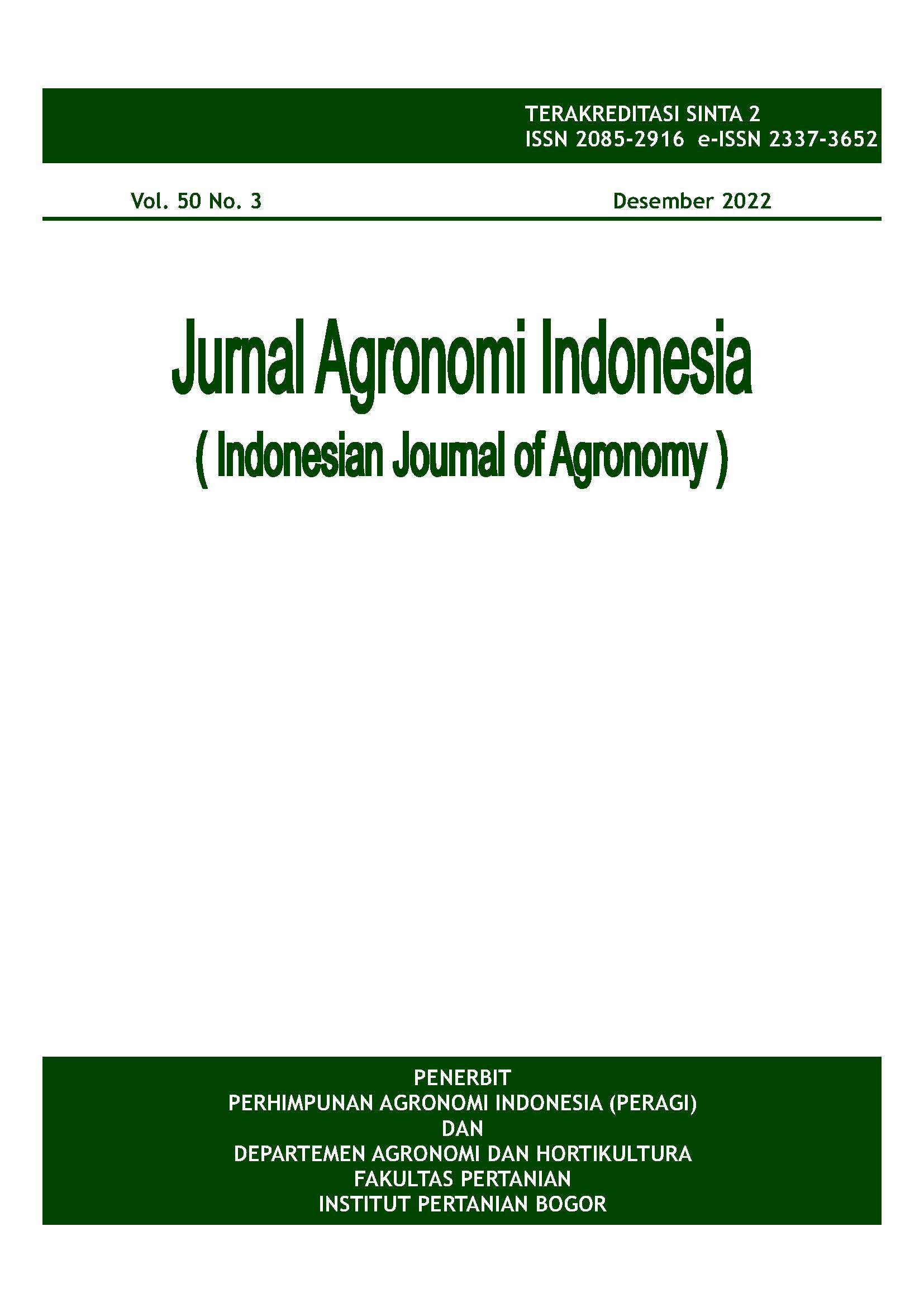Postharvest Losses of NOR Tomato Fruit Line MA 131-6-3 Treated by Ethephon and Calcium Carbide
Abstract
Ethephon and calcium carbide are artificial ripening compounds that are often used to faster fruit ripening during postharvest. These two compounds were induced in non-ripening (NOR) tomato fruit line MA 131-6-3 because it produced endogenous ethylene and lower respiration. This study aimed to determine the effect of ethephon and calcium carbide on postharvest losses of NOR tomatoes for 14 and 28 days after treatment. Exogenous application of 1,500 ppm ethephon and 15 g kg-1 was given to NOR tomato fruit of line MA 131-6-3 and ambient conditions at temperature 28.08±1.80 °C and relative humidity 75.67±2.09%. This experiment was carried out in Sidoarum village, Godean district, Sleman regency, Special Region of Yogyakarta province, Indonesia, in 125 m above sea level. As a result, ethephon can increase fruit rotting. Furthermore, calcium carbide can accelerate metabolism which has an impact on physiological loss in weight, changing color to yellowish (b*), increasing vivid color (chroma), but the color of tomato fruit cannot turn red.
Keywords: fruit ripening, fruit quality, postharvest, total soluble solids, total titratable acidity













